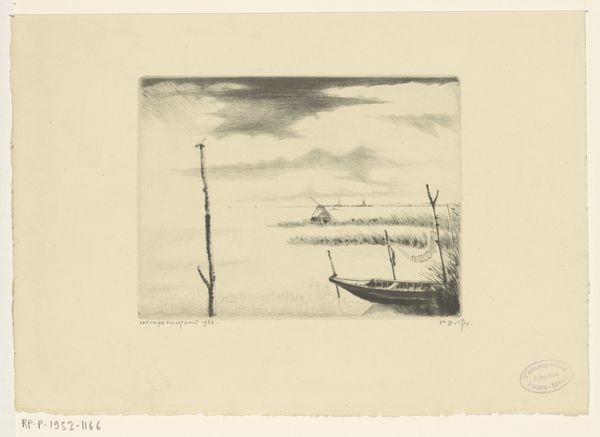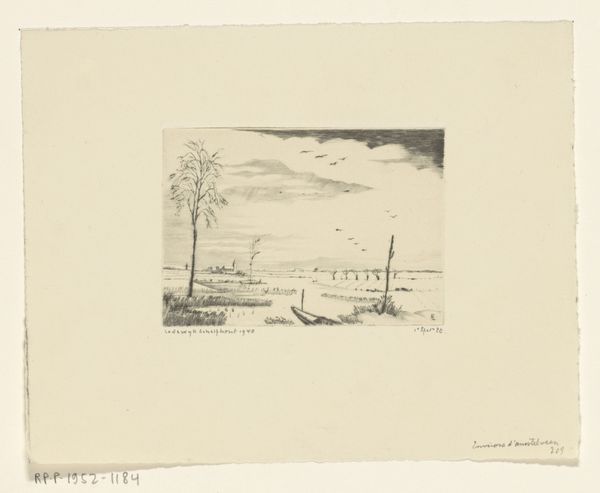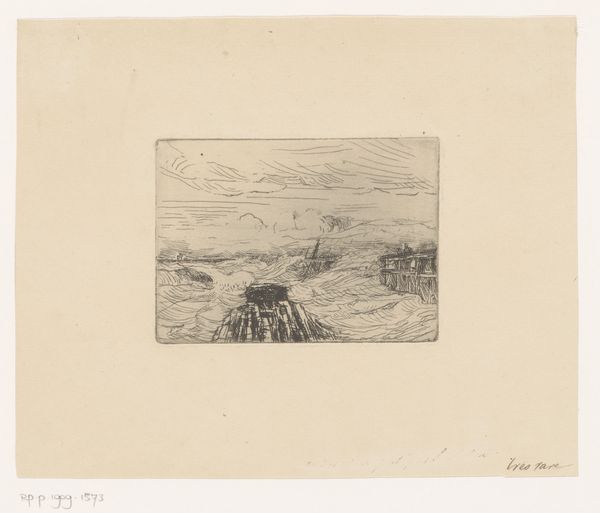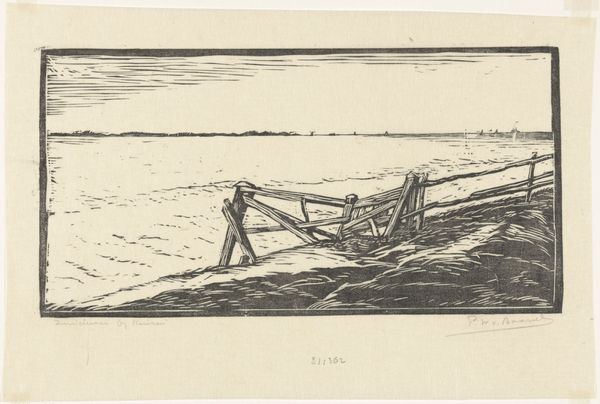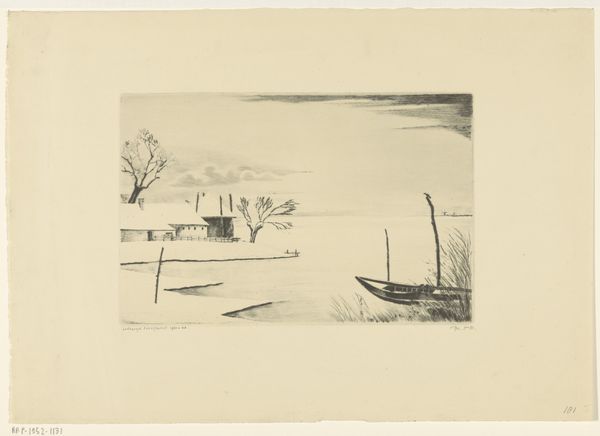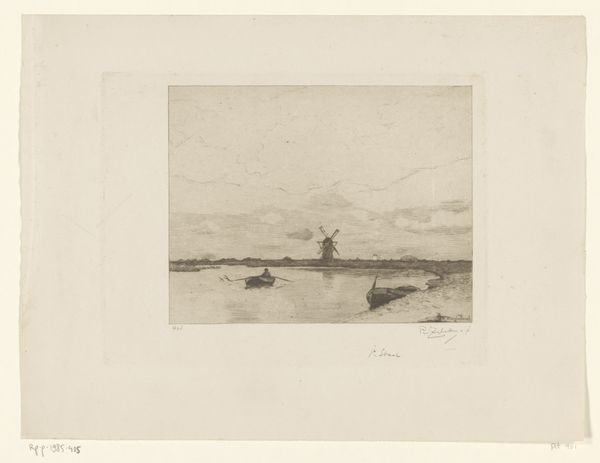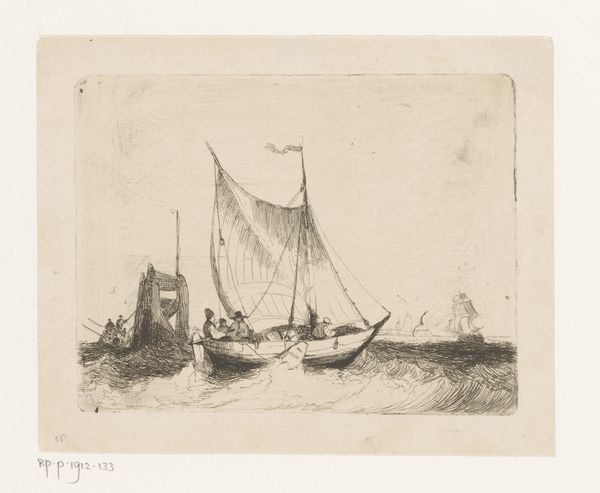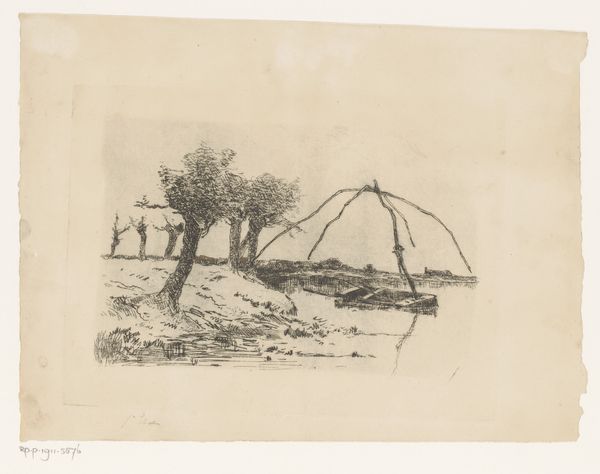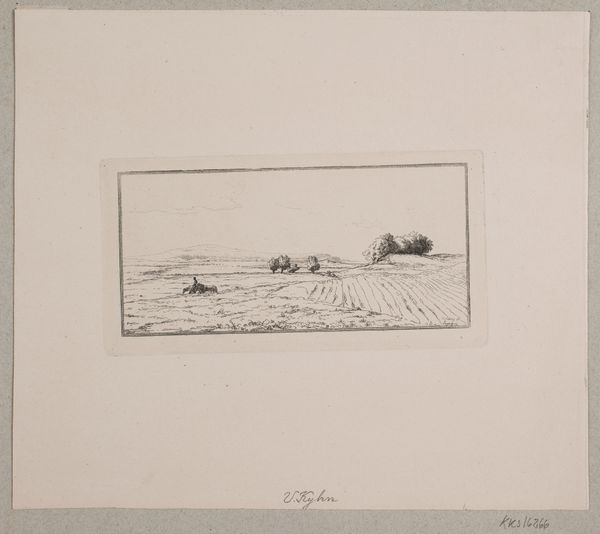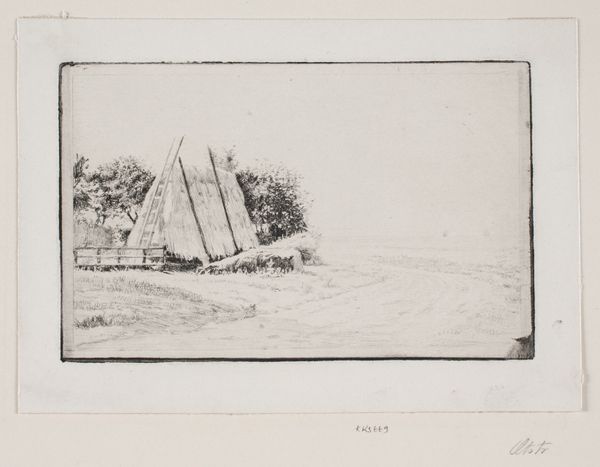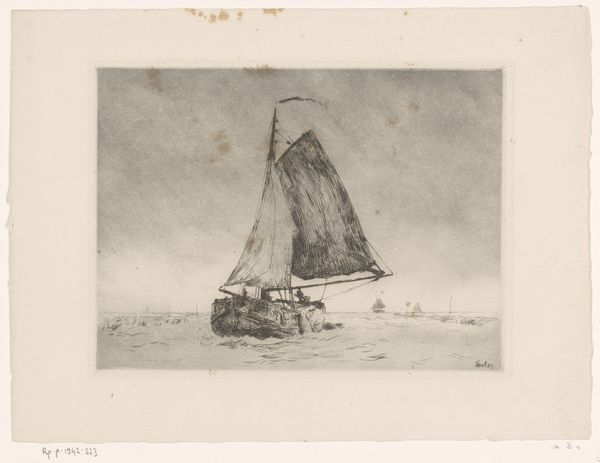
drawing, print, paper, ink
#
drawing
#
quirky sketch
#
dutch-golden-age
# print
#
old engraving style
#
landscape
#
paper
#
personal sketchbook
#
ink
#
idea generation sketch
#
sketchwork
#
ink drawing experimentation
#
pen-ink sketch
#
sketchbook drawing
#
storyboard and sketchbook work
#
sketchbook art
#
realism
Dimensions: height 148 mm, width 185 mm
Copyright: Rijks Museum: Open Domain
Curator: Ah, here we have Lodewijk Schelfhout’s "Winterlandschap met schuit, hooischuur en vogels," created around 1940. It’s a drawing, an ink on paper print, now residing here at the Rijksmuseum. Editor: Brrr, that's the first thing I feel! It's bleak. Like a memory fading, rendered in delicate scratches. I almost feel colder just looking at it. Curator: Indeed, the monochromatic palette and sparse composition contribute to that feeling. But consider the enduring symbolism of winter landscapes. They often represent dormancy, reflection, a turning inward, and a cycle of decay and rebirth, not solely negativity. Editor: I get that intellectually, the whole Jungian wintering thing. But emotionally? That lone bird perched on the branch – it's not hopeful, it's… exposed. Vulnerable. Curator: Birds, throughout art history, are rich with layered interpretations: freedom, the soul's journey, messengers between worlds. In a winter landscape, though, perhaps that vulnerability is precisely the point. It confronts us with our own fragility in the face of nature’s indifference. And then you have the boat, also. Think about its journey on these barren waters! Editor: Okay, true. The bird and the abandoned boat do feel connected in that regard. Speaking of, the hay bale is rather striking with that darker hatching surrounding it. Almost like a silhouette standing defiant against the emptiness. Curator: Note the artist’s technique as well. It has that feeling of sketching directly from life—very raw. The details become minimized for that immediate transfer of vision from landscape to paper. Editor: Right. And perhaps there's even a hint of… dare I say it… dark humor? The scene is austere, yes, but also a bit like a stage set. This bird! This haystack! It's absurd, in a way. A very Dutch sort of absurd, maybe. Curator: Well, certainly, it fits into the traditions of Dutch Golden Age landscapes. The flattening of the landscape itself allows the symbolic content to resonate powerfully. It evokes a sense of time—and timelessness. The artist presents a single, symbolic scene; a specific season meant to be perceived on a longer scale of passing time, not as a snapshot of a moment in a certain space. Editor: That makes it more relatable somehow. A recognition that the seasons of life also apply on the larger world as well, and here is the artist showing a winter one. It also hints about how art functions as a time-stopping device as well. Thank you! Curator: An excellent point. A work offering the space to contemplate the enduring cycles that shape our existence and art's function within these reflections.
Comments
No comments
Be the first to comment and join the conversation on the ultimate creative platform.
